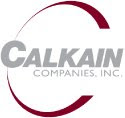
As commercial real estate struggles to break through the economic quagmire, it must contend with a flurry of changes on the horizon. Specifically, changing capital gains tax rates, estate taxes, and FASB standards could heavily alter the landscape. Of course, they also may not. There is much uncertainty in the future and all we can really do is theorize.
Capital Gains Taxes
If the Bush tax cuts are allowed to expire (which all signs are pointing to) then the capital gains tax rate will increase from 15% this year to 20% in 2011. There are few things this rate change could induce. Investors may be more likely to cash out this year or consider continuing their investment via 1031 tax exchange.
Estate Tax
In one of the oddest strokes of lawmaking to come from Washington, the estate tax expired in 2010 but is scheduled to make a deafening resurgence in 2011. In 2009 the max rate was 45% over $3.5 million; in 2011 it will be 55% over $1 million. This will certainly cause an increase in asset planning, especially with regard to trusts. Whole swaths of people who never needed to worry about the estate tax will be searching for financial planners in order lessen this tax hit.
FASB 13
This is a tricky one. Mostly because no one really knows what the final lease accounting changes in FASB 13 will be. But there will be changes. That has been enough to worry many industry insiders, who could see these changes having serious affects. More likely than not, the concept of operating leases will go away, and no more lease classification will exist. Investors could face a shortage of financing, and tenants may demand shorter leases. However, it is too early in the game to know for sure and debate is still heavy on whether there will be any impact at all.
How these changes will affect commercial real estate (and net leases) may in the end, be an art for scryers. What will their individual impacts be? How will they affect the industry in unison? Investors undoubtedly will continue to "swap until they drop" and receive a step-up in basis for capital gains purposes, and with proper estate planning will side-step the draconian estate tax. More likely than not more money and attention will be spent on tax planning in 2011 than ever before. Lease accounting, estate tax considerations, and capital gains tax rates rising will cause most developers and investors to put their tax attorney on speed dial in front of their lender contacts.






















